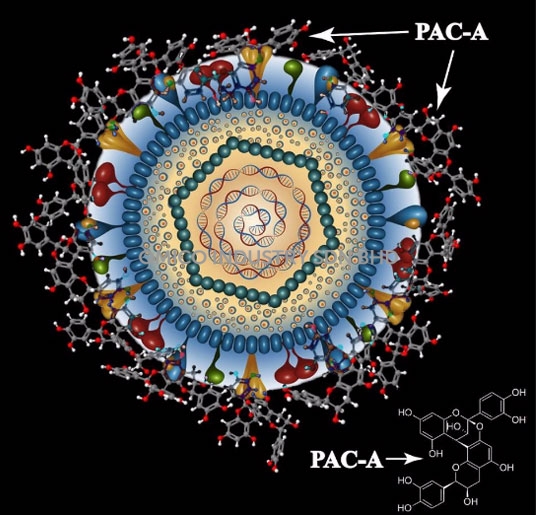
 The berries of cranberry are used since hundreds of years as a remedy for diseases of the urinary tract and have attracted attention due to their potential health benefits. The beneficial mechanism was historically thought to be due to the fruit acids causing a bacteriostatic effect in the urine. However, recently, a group of proanthocyanidins (PAC) with A-type linkages were isolated from cranberry which exhibit bacterial anti-adhesion activity against both antibiotic susceptible and resistant strains of uropathogenic P-fimbriated Escherichia coli bacteria. The phytochemicals associated with cranberry bioactivity include flavonoids, phenolic acid derivatives, hydroxycinnamic acid derivatives, organic acids, and isoprenoids (including ursolic acid and lutein). Among phenols are flavonols, anthocyanins and proanthocyanidins (PACs), catechins or flavan-3-ols.
The berries of cranberry are used since hundreds of years as a remedy for diseases of the urinary tract and have attracted attention due to their potential health benefits. The beneficial mechanism was historically thought to be due to the fruit acids causing a bacteriostatic effect in the urine. However, recently, a group of proanthocyanidins (PAC) with A-type linkages were isolated from cranberry which exhibit bacterial anti-adhesion activity against both antibiotic susceptible and resistant strains of uropathogenic P-fimbriated Escherichia coli bacteria. The phytochemicals associated with cranberry bioactivity include flavonoids, phenolic acid derivatives, hydroxycinnamic acid derivatives, organic acids, and isoprenoids (including ursolic acid and lutein). Among phenols are flavonols, anthocyanins and proanthocyanidins (PACs), catechins or flavan-3-ols.
Careful determination of the total PAC content using the BL-OMAC method and the authentication of PACs-A with mass spectrometry in cranberry extracts are necessary to prepare effective doses for UTI prevention . A dose of 112 mg UTI-oxi containing 36 mg PACs-A was found to be effective in preventing UTIs when used once per day for 7 days in animal less than 20kg.
UTI-oxi is to achieve an alternative non-antimicrobial therapeutic and/or prevention strategies for recurrent or persistent UTI in dogs and cats, in reducing the development of antimicrobial resistance and in achieving higher clinical success.
 Supporting clinical study on UTI-oxi ingredient against UTI:
Supporting clinical study on UTI-oxi ingredient against UTI:
Prevention of Urinary Tract Infection with Oximacro®
A-type cranberry proanthocyanidins
Canine bacterial urinary tract infections
Feline bacterial urinary tract infections
The structure of cranberry proanthocyanidins

